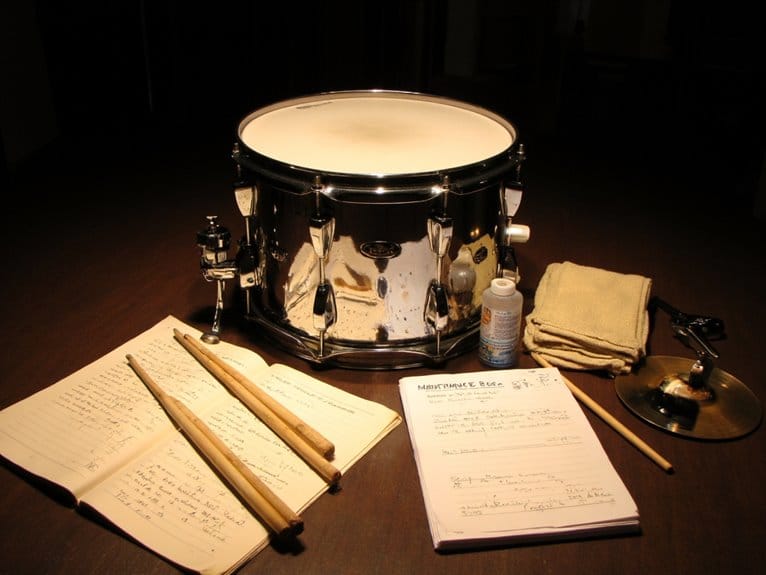What Is the Best Shape for a Recording Studio Control Room?
In the pursuit of sonic perfection, the ideal shape for a recording studio control room remains a topic of debate. Rectangular rooms offer symmetry, but risk flutter echo and frequency imbalances. Triangular and angled designs mitigate these issues, but demand precise speaker placement and calibration. Curved and spherical shapes, although complex and costly, provide unparalleled diffusion and absorption. Ultimately, optimizing room dimensions, regardless of shape, is vital for accurate sound reproduction. The perfect control room shape remains a delicate balance of art and science – and the secret to releasing it lies in understanding the intricacies of acoustic principles.
We are supported by our audience. When you purchase through links on our site, we may earn an affiliate commission, at no extra cost for you. Learn more.
Understanding Acoustic Principles
In a recording studio control room, the accurate manipulation of sound waves relies heavily on a deep understanding of acoustic principles, which involve the intricate dance of sound reflection, absorption, and diffusion. These principles govern how sound interacts with the physical space, affecting the accuracy of mixing and mastering decisions. A well-designed control room utilizes these principles to create a superior listening environment. By strategically placing diffusers, absorbers, and reflectors, engineers can minimize unwanted resonance and frequency buildup, ensuring a clear and accurate sonic picture. By grasping these fundamental principles, studio designers and engineers can craft a space that truly serves the music, rather than the other way around.
Rectangular Rooms: Pros and Cons
The rectangular room, a staple of recording studio design, walks a tightrope between acoustic efficiency and sonic compromise, its very geometry presenting both advantages and drawbacks that engineers must carefully weigh. On the plus side, rectangular rooms can be easily optimized for speaker placement, and their symmetry helps to reduce standing waves. However, their parallel walls can also create flutter echo and exacerbate modal resonances, leading to an uneven frequency response. Additionally, the "boxy" shape can make the room feel claustrophobic, affecting the psychological comfort of mix engineers. By understanding these trade-offs, engineers can design rectangular rooms that strike a balance between acoustic performance and creative comfort.
Triangular and Angled Designs
Beyond the familiar rectangular shape, triangular and angled designs offer an invigorating alternative, leveraging non-parallel walls to mitigate flutter echo and modal resonances, while introducing unique challenges in speaker placement and room tuning. These unconventional shapes can create a more immersive listening experience, as sound waves interact with the room in complex ways. However, designers must carefully consider speaker positioning and calibration to avoid hotspots and frequency imbalances. Triangular rooms, in particular, can create a "sweet spot" for the engineer, but may compromise the accuracy of the mix. With careful planning and execution, angled designs can yield a truly exceptional sonic environment – but be prepared for a wild ride in the design process!
Curved and Spherical Shapes
Five decades of acoustic research have cemented curved and spherical shapes as a promising solution for recording studio control rooms, offering a unique combination of diffusion and absorption that can tame even the most unruly of sound waves. By dispersing sound energy in multiple directions, curved surfaces reduce flutter echo and standing waves, creating a more even sound field. Spherical shapes take this concept to the next level, providing near-perfect diffusion and absorption. However, implementing these shapes in a control room can be a complex and costly endeavor, requiring careful planning and execution. Despite the challenges, the benefits of curved and spherical designs make them an attractive option for studios seeking ideal acoustic performance.
Optimizing Room Dimensions
Nearly every recording studio control room, regardless of its shape or size, can benefit from a careful consideration of room dimensions, as the ratio of length to width to height can either exacerbate or alleviate acoustic anomalies. A rectangular room with a length 1.5 to 2 times its width is often considered ideal, as it allows for a smooth decay of sound waves. However, beware of the 'standing wave' effect, where parallel walls create resonant frequencies that can muddy the mix. To combat this, consider asymmetrical dimensions or strategically placed absorption panels. By perfecting room dimensions, you can create a space that's more conducive to accurate mixing and mastering. Remember, a well-designed control room is like a good pair of ears – it's all about the details!






